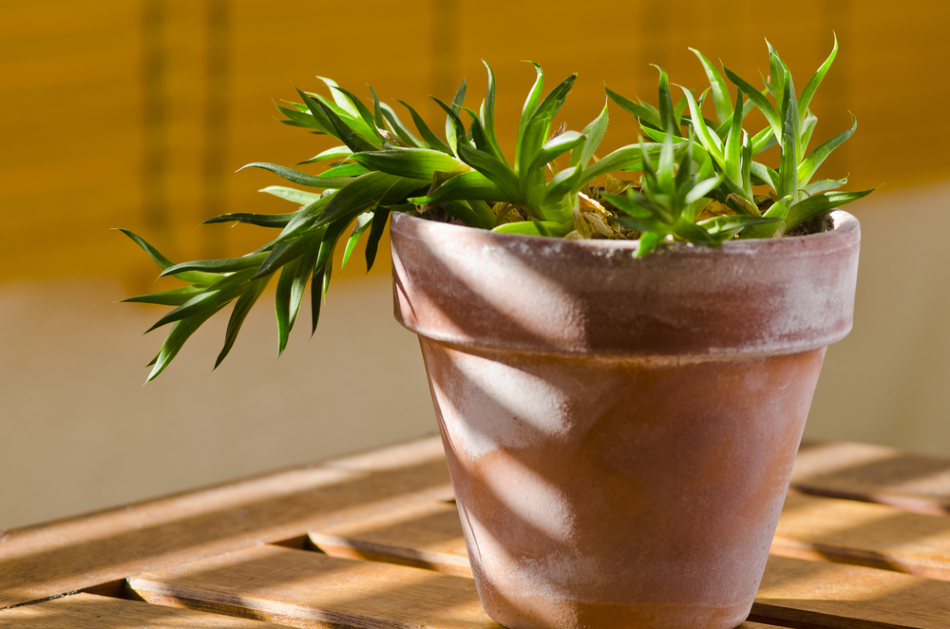
Researchers have found that shape memory polymers are able to mimic natural phototropism behaviors. Image Credit: Pat_Hastings/Shutterstock.com
Polymers and nanostructured polymer materials have a vast number of beneficial properties that enable them to be used in many applications and industries. It has recently emerged that nanostructured polymers may also possess the ability to exhibit tropism — specifically phototropism — a phenomenon found mostly in natural materials and organisms.
What is Tropism?
Tropism is a biological phenomenon found widely in nature. Tropism occurs when a material or biological organism responds to an external stimulus by either growing or moving towards the stimulus. When a specimen (i.e. material or organism) exhibits tropistic behavior, then the response from the specimen is towards the external stimulus, regardless of whether it is a movement or growth motion.
Materials and organisms that exhibit tropistic behavior cannot only sense and respond to multiple stimuli, but they can also constantly adjust their movements to follow the stimulus as it changes direction.
The response can be towards a number of external stimuli. For example, if a material or organism exhibits phototropic behavior, then they exhibit a directional response towards sunlight, i.e. they will move/rotate towards the direction of the incoming sunlight. Other examples include magnetic and electric fields. Regardless of the stimulus, tropistic behaviors are self-regulated by an internal feedback control mechanism between the organism and the stimulus.
There are many different materials and organisms which exhibit a nastic response to a stimulus — i.e. a non-directional response to the stimulus — but only certain materials and organisms exhibit this tropistic behavior. Most of the specimens that exhibit tropistic effects are biological in nature, with some common examples including viruses, fungi and many plants.
There are many smart materials that exhibit nastic behavior, but it has also transpired that nanostructured polymers (nanopolymers) are one of the only synthetic materials that can exhibit an artificial phototropistic behavior.
The Importance of Phototropism
Phototropism is an important phenomenon for plants as it enables them to recover the oblique-incidence energy-density loss (OEL), which is the reduction of light energy hitting and being absorbed by the plant at sub-optimal angles, i.e. when the plant is facing away from the sun. The ability to move with the sunlight enables many plants to get the most optimal amount of sunlight to function effectively.
Despite many efforts to recreate this phenomenon synthetically, many materials that are responsive to light do so via mechanisms that cause them to change in a nastic fashion. Some of these mechanisms include actuation in the presence of light and bending due to the molecular orientation of materials rather than actively moving towards the stimulus.
Nanopolymers and Phototropism
It has transpired that shape memory polymers — ranging from nanocrystalline forms, to liquid crystalline polymers and polymer hydrogels — are capable of following the direction of illumination from a light source. Many of these advancements have shown that inertial principles are the driving factors, making it harder to directly track the input energy from the light source.
However, recent research in the area has finally yielded reversibly photoresponsive nanosized polymers that can exhibit an artificial phototropistic behavior. Such polymers could be capable of being self-adaptive and capable of plant-like autonomous motions which could be useful for soft robotics and autonomous system applications.
The discovery has produced nanostructured polymeric materials, referred to as a sunflower-like biomimetic omnidirectional tracker (SunBOT), that can aim and align with an incident light direction across three dimensions and a range of temperatures. The SunBOT structures can automatically detect and track where the light is coming from with high accuracy, and without the need for any external power source or human intervention.
The SunBOTs are made of a polymer hydrogel with photoabsorber molecules located within the hydrogel network. The hydrogel network itself is made of poly(N-isopropylacrylamide), otherwise known as polyNIPAAm, and the photoabsorbers incorporated within the polymers are gold nanoparticles (although reduced graphene oxide molecules have also been used).
The nanostructured polymer hydrogels were arranged into an array of pillars. When the sunlight hit the center of the pillars (in a vertical direction), the polymer bends towards the light exposing the top circular face of the pillar to the sunlight. It does so via a mechanism akin to a volumetric phase transition, i.e. the light hitting the hydrogel heats it up which triggers the release of mechanical energy, causing them to bend towards the light.
The nanopillars then undergo a series of local heating and swelling, cooling and shrinking, and self-blocking mechanisms to continuously adapt to the moving light source. These reconfigurations are possible due to a built-in feedback loop that utilizes the photothermal and mechanical properties of the polymer.
The Future of Phototropism in Nanostructure Polymers
Nanostructured polymers can exhibit tropistic behavior if they are designed correctly using the right polymers, the right architecture, and the right mechanistic design. The SunBOTs designed using nanostructured polymers have been able to achieve up to a 400% energy-harvesting enhancement over non-tropistic (i.e. nastic) materials using the same oblique illuminations. Such polymers could have applications in solar vapor generation devices, robotics, smart devices and tracking devices, to name a few.
References and Further Reading
“Soft phototactic swimmer based on self-sustained hydrogel oscillator”- Zhao Y. et al, Science Robotics, 2019, DOI: 10.1126/scirobotics.aax7112
“Liquid crystalline polymer cantilever oscillators fueled by light”- Bunning T. J. et al, Soft Matter, 2010, DOI: 10.1039/B916831A
“Mastering the Photothermal Effect in Liquid Crystal Networks: A General Approach for Self-Sustained Mechanical Oscillators”- Gelebart A. H. et al, Advanced Materials, 2017, DOI: 10.1002/adma.201606712
“Artificial phototropism for omnidirectional tracking and harvesting of light”- He X. et al, Nature Nanotechnology, 2019, DOI: 10.1038/s41565-019-0562-3
Disclaimer: The views expressed here are those of the author expressed in their private capacity and do not necessarily represent the views of AZoM.com Limited T/A AZoNetwork the owner and operator of this website. This disclaimer forms part of the Terms and conditions of use of this website.